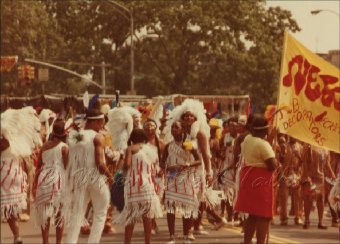
Global - Dr. Lamuel Stanislaus is an intellect, scholar and gentleman whose name is synonymous with excellence and integrity. This charismatic figure and former UN Ambassador is also one of the great historians of the Caribbean. When Steel Talks (WST) spotlights Dr. Lamuel Stanislaus in his capacity of Carnival and Steelpan historian extraordinaire as we revisit a 1985 interview with academic, ethnomusicologist, journalist, and cultural and music standout Doris Green.
read more
You need to be a member of When Steel Talks to add comments!

Replies
Black History
From Ah Duke! Ah King! Ah Pope!
Mighty Duke - Teach The Children
Caribbean Carnival
Trinidad is the hub of the Caribbean Carnival. According to Dr. Stanislaus, the French settlers took the two days before Lent to go visiting their friends while wearing a disguise. This was in 1783 and is the first recorded instance of something resembling carnival in Trinidad. In 1833 when the emancipation bill was passed, the freed slaves decided to participate in this fete. Although the white settlers resented it, the freed slaves took to the streets singing calypsos which were derived from their African heritage. Why calypso? Dr. Stanislaus tells the story of how the displaced Africans worked hard as slaves. The slave masters did not want them to communicate with each other because communication was supposed to retard their work. Therefore, the African forefathers began to communicate in songs derived from African dialects which the slave masters could not understand. Although they would sing these mélanged verses while working, they were actually communicating to each other, the local gossip and mocking the slave masters. This is why calypso, today, takes the form of topical gossip designed to mock current incidences.
Trinidad Carnival Origins
Calypso Roots